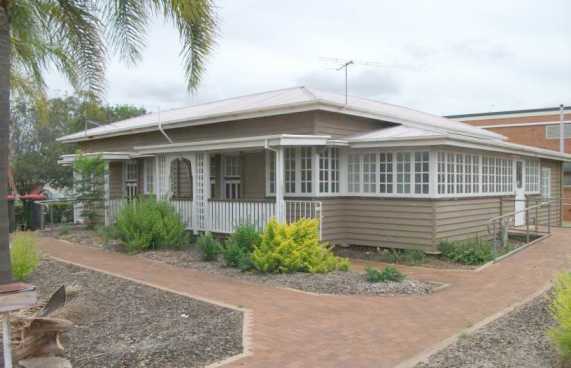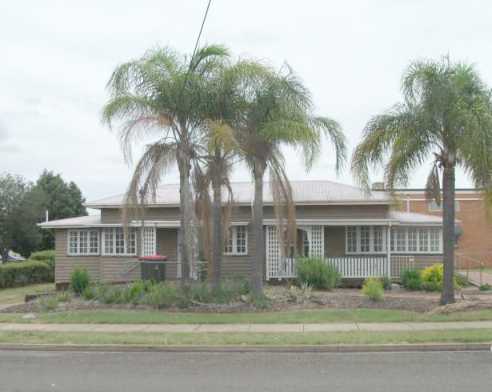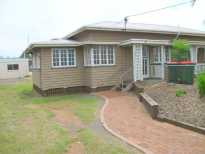Dealings of South Burnett Regional Council (SBRC)
Closure of Glendon Street Medical Centre
published: 25th February 2017
updated: 6th November 2019
Click to select, or scroll down the page :-
Closure of Glendon Street Medical Centre
SBRC owned a substantial building in Glendon Street, Kingaroy,
adjacent to SBRC's private hospital.
A bulk-billing GP medical practice,
known as Glendon Street Medical Centre,
leased the building from SBRC.
SBRC owns a private company which controls SBRC's private hospital.
The private company is called
"South Burnett Community Hospital Foundation Limited".
SBRC had handed control of the Glendon Street property to SBRC's private company.
Under questionable circumstances,
the private company served a notice of termination of lease on the tenant.
In an article published on website
southburnett.com.au
on 9th August 2016,
it was reported that the business owner of the medical practice claimed to have
been given
"a very unreasonable five weeks' notice".
The article also stated that the CEO of SBRC
said that eight weeks notice to vacate the premises had been given.
Whether it was five weeks notice or eight weeks notice,
it was nowhere near enough time
for the medical practice to make alternative accommodation arrangements.
Searching for new premises and obtaining all the necessary approvals for a GP surgery
requires substantially more time than the medical practice was given by SBRC's private company.
The medical centre closed on 17th August 2016.
Kingaroy has a shortage of doctors.
Many Kingaroy doctors refuse to accept new patients because their books are full.
As a result of the closure, many patients were left without a GP.
Reason for Short Termination Notice must have been Very Important
By kicking out the tenants of
the Glendon Street building,
SBRC's private company ceased to receive rental income from the property.
The private company which controls SBRC's private hospital
had been given control of the Glendon Street property by SBRC.
The purpose of this arrangement was so that the private company could
collect the rent from the Glendon Street property
and then use the money for its own secretive purposes.
This ploy enabled the rental income to legally
be taken out of the pockets of ratepayers
to subsidise the private hospital in a non-transparent manner.
This ploy also enabled spending decisions about this SBRC rent money
to be made by non-SBRC people who have vested interests in the
medical profession.
In bygone years, the rent had formerly been paid into council coffers,
which are subject to proper regulations.
There must have been a pressing and compelling reason
why the private company had to repossess the building quickly.
Funding to demolish the building was not confirmed until 22nd February 2017,
six months after the tenants departed.
Even then, the funding only became available through an unexpected multi-million dollar windfall grant to SBRC.
The reason for the shortness of the notice of termination of the lease
must have been very important,
more important than losing months of rental income that the private hospital company
could have continued to receive while the evicted medical practice organised alternative accommodation.
There clearly must have been a very important reason
to require such a quick repossession.
No Genuine Reason to Terminate Lease at Short Notice
In a Courier-Mail article published on 19th August 2016,
Mayor Campbell was reported
as having said that SBRC had no intention of demolishing the medical centre building immediately.
His statement shows that there was
no reason why SBRC's private hospital company
could not have given the medical centre sufficient time to relocate before booting them out.
In other words, there was no good reason
why Kingaroy lost one of its much-needed medical practices.
Further proof that there was no actual plan in place to immediately demolish the medical centre emerged
in a report on local news website
southburnett.com.au
on 15th February 2017.
Here it was stated that demolition of the medical centre building
was included in a list of projects proposed
for inclusion in a program of works designed to spend
a windfall $4.2 million "Works For Queensland" grant from the state government to SBRC.
A particularly significant item of information contained in the report
stated that one of the criteria for inclusion in the list of projects
was that none of the proposed projects
was already included in SBRC's current 2016-17 budget.
In other words, as at February 2017,
six months after the medical centre closed,
a plan to demolish the building was still only at the proposal stage.

Glendon Street Medical Centre, February 2017
Simple Calculation shows Renovation Better than Demolition
A report published on 17th February 2017 in the
website of the South Burnett Times
put SBRC's estimate of the cost of demolition of the former medical centre at $84,000.
In a Courier-Mail report of 19th August 2016,
it was stated that Mayor Campbell had said that
it would cost at least $200,000 to fix the dilapidated medical centre.
He said that it was too expensive to repair.
There is a very simple arithmetic calculation that
shows the difference in financial outcomes
between renovating and demolishing the building.
The result is unequivocally in favour of renovation.
If the building was demolished,
the cost to ratepayers would be $84,000
and ratepayers would be left with no asset.
$200,000 minus $84,000 equals $116,000.
This is the only simple arithmetic required.
This calculation uses only SBRC's own figures
and does not involve any assumptions.
Demolition only makes sense financially if the building
would be worth less than $116,000
after $200,000 had been spent on renovations.
As it is highly likely that the building would have been worth
much more than $116,000 after having been renovated,
this independent analysis of financial outcomes
shows that demolition appears to make no sense at all.
In summary, renovating the building
appears to have been an overwhelmingly better option than demolishing it.
If there was no good reason for demolishing the building,
then the real reason must have been concealed by SBRC.
Evidence that Real Reason for Demolition may have been Concealed
Evidence Item 1
Mayor Campbell and the CEO of SBRC are not members of the board of directors of the hospital foundation company,
but they both have observer status at board meetings.
There is an inconsistency between statements from different arms of SBRC.
The Courier-Mail reported on 19th August 2016
that the lessee of the medical centre building had received a letter from solicitors acting for SBRC's private company
saying that the land would be cleared so that the private hospital could be expanded.
The Courier-Mail reported also that Mayor Campbell had contradicted this,
claiming to be unaware of expansion plans for the hospital.
The solicitor and the mayor cannot both be right.
In general, when each player associated with a questionable act has a different story,
then there is a strong possibility that none of the stories are true.
If none of SBRC stories about the medical centre building is true
then either there was no reason to demolish the building
or the real reason was concealed.
It is worthy of note that there is a second inconsistency.
It was mentioned near the beginning of this report
that there is a difference of three weeks
between what the lessee and the CEO of SBRC claim
to have been the duration of the notice of termination.
Evidence Item 2
The independent analysis of financial outcomes shown above
concludes that renovation is clearly a much better option than demolition.
Therefore, there is no known plausible reason for demolishing the building.
The lack of a plausible reason for demolishing the building
suggests that the real reason was concealed.
Evidence Item 3
It has been explained above that SBRC's private company
could have continued to receive rent for months
while the evicted medical practice organised new accommodation.
Instead, the lease of the building was terminated at short notice,
even though it was known by SBRC that funds for demolition would not be available for a considerable time.
The lack of any reason for giving a short period of notice,
plus the existence of a good reason for not giving a short period of notice,
suggests that there must have been a concealed reason for evicting the tenants.
Conclusion
To summarise the above three lines of evidence:-
(1) Inconsistencies in SBRC's stories.
(2) No justification for demolition because renovation would clearly be more advantageous.
(3) No justification for forcing the tenants out so quickly.
Based on this evidence, it can be concluded
with a very high degree of confidence
that the information given to the public by SBRC about the eviction of a medical practice
is probably either incomplete or misleading or completely false.
Did SBRC Deliberately Force a Medical practice to Close?
The termination notice period appears to have been unreasonably short.
The notice period should have been much longer
to give the medical centre enough time to find alternative accommodation.
There have been reports that the building in question was badly in need of renovation,
and that the costs of renovation would be so high that demolition would be a better option.
However the building was not dangerous, so rapid action was not required.
Regardless of whether or not the condition of the building actually warranted demolition,
the decision to demolish it does not justify giving the lessee a short notice of termination.
Considering the furore raised by the termination of the medical centre's lease,
there is little plausibility to
claims made by SBRC staff that they were unaware that more time was required by the medical centre to relocate.
In any case, it must surely have been realised
before the termination notice was served
that the period of notice was too short to reasonably allow the lessee enough time to relocate.
Why was it not possible
for a longer period of notice to have been given?
In other words, did SBRC deliberately force a medical practice to close?
The evidence analysed above
about the reason for demolishing the medical centre
shows that either there was probably no reason for demolishing the building
or the real reason has been concealed.
If the real reason for demolition has been concealed
then it is unlikely to have been a good reason.
If there was no genuine or good reason for demolishing the medical centre,
then it follows that SBRC must have actively wanted
to disrupt the medical practice that occupied the building.
The shortness of the notice given to quit the building
fits neatly into this picture.
In summary,
there are strong reasons to suspect that SBRC deliberately
brought about the closure of a GP medical practice.
If the answer is "yes" to the big question of:-
"Did SBRC deliberately force a medical practice to close?"
then a bigger question arises:-
"Why did SBRC want the medical practice to close?"
These questions still require answers
even though the Glendon Street building no longer exists.

Glendon Street Medical Centre, February 2017




